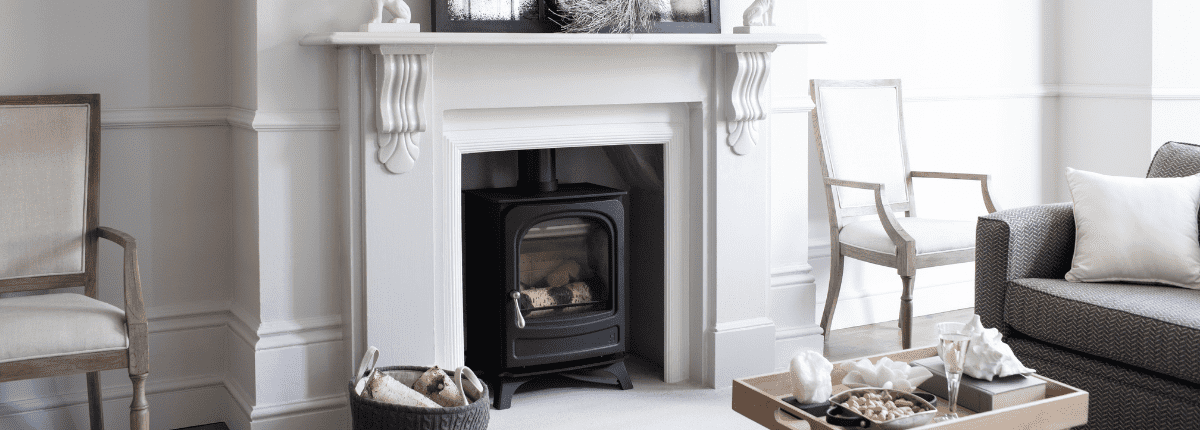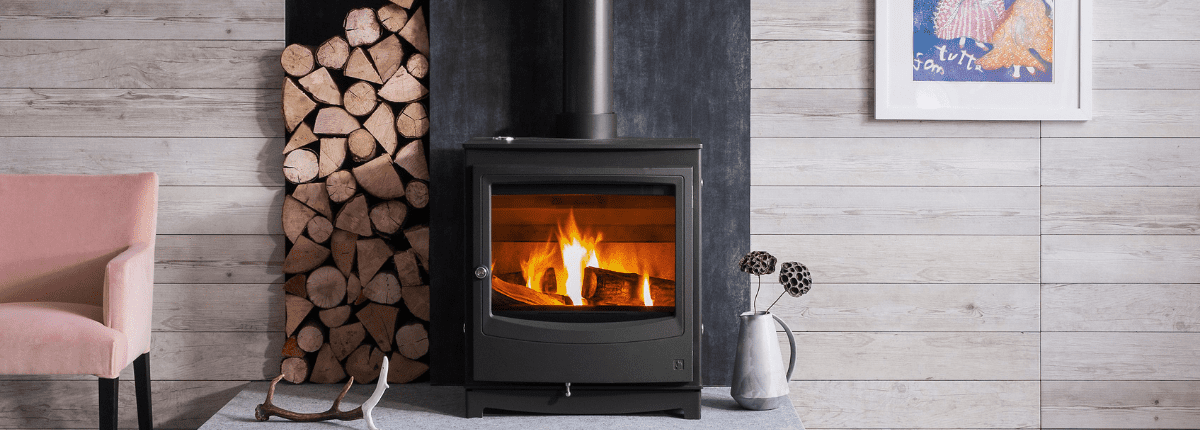Menu
Multi-fuel stoves are an excellent investment, but getting the most out of them requires knowledge of how they work and what maintenance they require. This post will help you avoid common mistakes and keep your stove in top condition to enjoy for many years.
Many multi-fuel stoves are built with the latest clean-burn technology. This reduces emissions by re-igniting harmful particulates that are initially burned. Making sure the fuel used is properly seasoned, the clean-burn or eco-design ready technology will burn pollutants away.

Lighting a multi-fuel or wood-burning stove is relatively straightforward if you follow a simple method. Start by placing a firelighter on top of a fire bed of your chosen fuel. Cover this stack with tiny bits of kindling, then place the logs or briquettes around it. Light the firelighter directly, and once the fire starts to burn consistently, add more fuel as required. You should find the fuel will catch alight quickly once lit.
If you decide to burn wood, always leave some ash on the bed. Burning briquettes need good air circulation from below, so always empty the ash if you use this fuel type.
Make sure the air vents on your stove are open once the fire has been lit to provide plenty of air supply to the fire. Once you are happy with the level of the fire, adjust the air vent to halfway to limit the oxygen supply; otherwise, you will burn through fuel too quickly. Most stoves have different air controls which impact how the wood burns, so always refer to the manufacturer’s recommendations to get the perfect fire. Maintain a consistent temperature once the fire is going. Try to maintain a constant temperature by adding small fuel as needed. Avoid overloading the stove, as this can cause the fire to go out or produce too much smoke.
If you want to revive the fire, add a few pieces of the kindling followed by your chosen fuel, and reopen the air vent to give the fire more air circulation. You can tame the fire or put it out by completely closing the primary vent.
If you want to burn your wood burner longer or even through the night, you can do a few things to get a slower extended burn.
The best way to build an extended fire is to load large pieces of wood into your wood burner packed tightly. This allows the fire to slowly spread from log to log, extending your fire for 6 to 8 hours or more. This burn maintains a low, steady heat that can stay burning longer.
A common mistake for many wood stove owners is to add large amounts of wood with the logs crossed over. This type of loading spreads the fire quickly, leading to a large fire that burns quickly. These hot fires produce a lot of heat very quickly.
If the wood burner is on a low setting, the fire can’t get enough air and will smoulder and create quite a smokey fire. So the trick here is to build an extended fire, where the front layer of wood insulates the back layer, preventing the fire from spreading too quickly and maintaining visible flames for hours.
So once your initial fire has burned down, it’s good to rake the coals to the front of the wood burner, then place six or seven large logs tightly packed behind the coals. The coals will have enough heat output to ignite your logs without adding more kindling. The fire will ignite the front layer and work slowly to the back, giving you a slower burn rate and extending the fire.

A multi-fuel stove can be a convenient and efficient heating source, but it requires regular cleaning and maintenance to ensure it operates safely and efficiently. Here are a few tips for keeping your stove in top shape:
The glass on your stove is the main area to keep clean; it’s what makes a multi-fuel stove so attractive, so maintaining a beautifully clear view through the glass in your stove door is really important.
The common issue is discolouration on the glass from burning wood or burning coal; use a damp soft scourer or cloth to clean the glass and choose a specially designed product on the stove door. Always wait until completely dry before using the stove again. And, of course, we always recommend buying a quality companion set to keep your stove and hearth looking its best.
When it comes to using a multi-fuel stove in your home, one of the most important decisions you’ll make is choosing the right fuel. Different fuels have different characteristics and burn at different rates, so selecting a fuel that will work well with your stove and meet your heating needs is important. Here are a few tips to consider when choosing the right fuel for your multi-fuel stove:
Considering these factors, you can choose the right fuel for your multi-fuel stove and enjoy efficient and effective heating all winter. If you’re burning wood on your stove, ensure it has been properly seasoned (dried out). The logs should have 20% or lower moisture content to stop excessive smoke and pollution. Please note that the sale of house coal and wet wood is being phased out in the UK because they create the highest level of air pollution and are the least efficient.
Seasoned wood is cleaner and more efficient to burn on your stove than wet wood, giving a better heat output. When you burn unseasoned wood on a log burner, the moisture inside the wood creates a high level of smoke and smouldering. This isn’t good for the air we breathe and produces particulate matter. It can also damage your chimney and stove beyond repair with soot, tar and creosote.